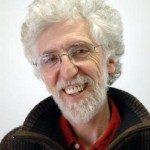Link to Pubmed [PMID] – 26764427
Genome Biol Evol 2016 Jan;8(2):375-386
Casposons are a superfamily of putative self-synthesizing transposable elements that are predicted to employ a homolog of Cas1 protein as a recombinase and could have contributed to the origin of the CRISPR-Cas adaptive immunity systems in archaea and bacteria. Casposons remain uncharacterized experimentally, except for the recent demonstration of the integrase activity of the Cas1 homolog, and given their relative rarity in archaea and bacteria, original comparative genomic analysis has not provided direct indications of their mobility. Here we report evidence of casposon mobility obtained by comparison of the genomes of 62 strains of the archaeon Methanosarcina mazei. In these genomes, casposons are variably inserted in three distinct sites indicative of multiple, recent gains and losses. Some casposons are inserted into other mobile genetic elements that might provide vehicles for horizontal transfer of the casposons. Additionally, many M. mazei genomes contain previously undetected solo terminal inverted repeats that apparently are derived from casposons and could resemble intermediates in CRISPR evolution. We further demonstrate the sequence specificity of casposon insertion and note clear parallels with the adaptation mechanism of CRISPR-Cas. Finally, besides identifying additional representatives in each of the three originally defined families we describe a new, fourth, family of casposons.


